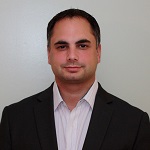 By Raymond Vrabel, Director, Technical Account Management, Continuum Managed IT Services
By Raymond Vrabel, Director, Technical Account Management, Continuum Managed IT Services
Part 7 of a monthly blog series examining tips on how MSPs can work to break “bad” business habits that they might unknowingly fall into as a result of just wanting to get things done.
In the previous installment of “Breaking Bad,” I discussed how to make a solid plan for navigating the industry trade show landscape. In this month’s blog, I offer a few tips on how to avoid becoming complacent in your business, by adding a few simple technologies to your services offering—all at a relatively low cost.
Before focusing on the technology aspect, think about your customer base and how you want to approach your clients about trying something new. I’m not suggesting that you approach them immediately and offer the full managed services gamut. However, by adding just one of these technologies and then building upon it, you can get there one step at a time. In addition, you can effectively demonstrate to your clients that you are being proactive about your business model.
Consider these technologies for your portfolio:
1.) Remote Monitoring and Management (RMM): While you might currently be working as break/fix, managed services is still trending at an upward pace. In fact, recent studies are predicting a bumper year in 2014 for MSPs. According to MarketsandMarkets,the managed services market will grow by almost 80%, from $142.75 billion in 2013 to $256.05 billion in 2018. This demand is set to translate acrossevery industry vertical. However, even if you are apprehensive about offering a recurring business model, start slowly by first adding an RMM tool. Find one that provides the freedom to scale your business and allows you to invest as little or as much as you want.
Providing some type of remote support is key when a problem should occur; it’s even appropriate if you are running a break/fix model. This way, you can think about issues before they occur, all while keeping employee uptime to a maximum and avoiding downtime. Remember, each time you do something that’s proactive for your business (like adding RMM), you are moving one step closer to a managed services model, whether you intend to or not.
2.) Regular Updates and Patch Management: No solution provider wants, no matter what business model they are offering, a client whose patches are out of date and not secure – this could lead to potential disaster. For instance, think about what happened earlier this month with the Community Health System security breach; nearly 4.5 million patient data records were compromised. While this is a much larger scale than your SMB clients, even if just one of your clients experiences a data breach, it can lead to much larger problems. Most of these breaches and viruses, for example Cryptolocker, ultimately settle by way of weak or out-of-date patches. Patches can protect against these vulnerabilities in which hackers can easily gain access. By keeping track of your clients’ patches and offering updates, you save both yourself and your client time and stress that could lead to a possible data compromise.
3.) Backup and Disaster Recovery (BDR): This is a technology that is truly a no-brainer. Even if you only budget for one additional technology, I recommend BDR. It offers low overhead to your client and is not costly for you. I have seen many solution providers who have shifted their business model to managed services simply because they wanted to add BDR. Managed services isn’t something you can actually “touch” and/or “feel,” so many times it can seem a bit more daunting when moving from break/fix--not to mention a harder value proposition sell to your client. But because BDR is an actual device and function that can be demonstrated, it is often the stepping stone that leads to a managed services model. This, coupled with its ROI and up-front cost-effective price point, can be the first move toward putting together an eventual managed services model. And you might even pick up some new clients along the way.
4.) File Sync and Share: In the last year, I have seen more gravitation toward this technology. File sync and share offers low overhead and cost and is another way to get your foot in the door to talk with new clients about this hot topic. File sync and share could also be a way to get your business ready to move to the cloud (but let’s not get ahead of ourselves just yet). The reality is that everything is moving into a virtual world, and now with the cloud and other phenomenons such as Bring Your Own Device (BYOD) and smartphones, users want to access their data anywhere, and at any time. With a reliable file sync and share platform, you can offer this (along with BDR) to ensure that your client’s data is safeguarded and accessible at all times.
Complacency can occur at any time within your business. Take time each month to step back and perform a quick re-evaluation. By adding just one of these technologies, you can gain a “double dip” for both yourself and your client—adding a new offering to benefit your clients and possibly obtain new ones. You can also move one step closer to offering a managed services model. It really is a lot easier than you might have thought!
Raymond Vrabel is Continuum's Director of Technical Account Management and participates in product and service growth initiatives. He manages Continuum's Technical Account Management team which supports over 3,400 partners worldwide. Vrabel has more than 15 years of experience in the IT industry, specializing in managed IT services, disaster recovery and cloud solutions. Follow him on Twitter: @rayvrabel.


